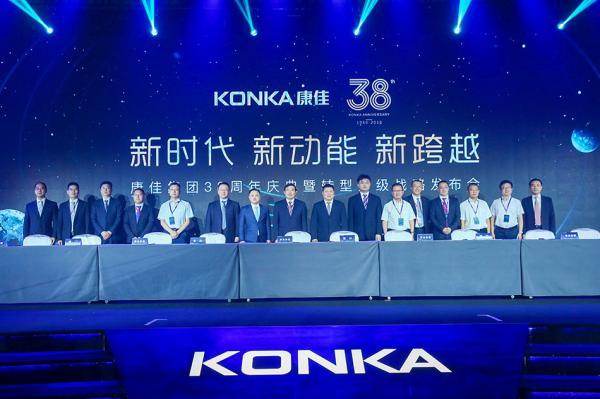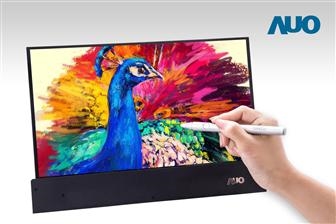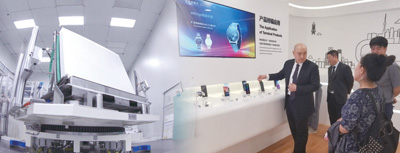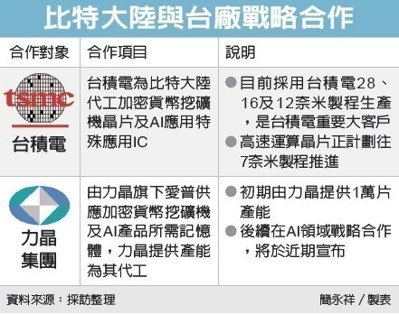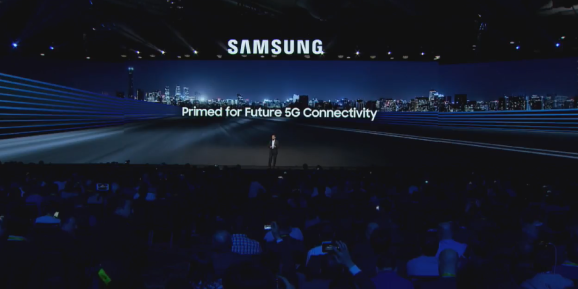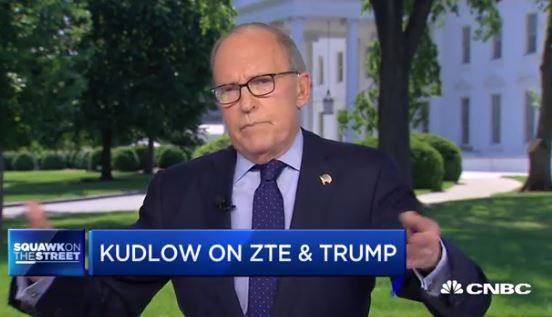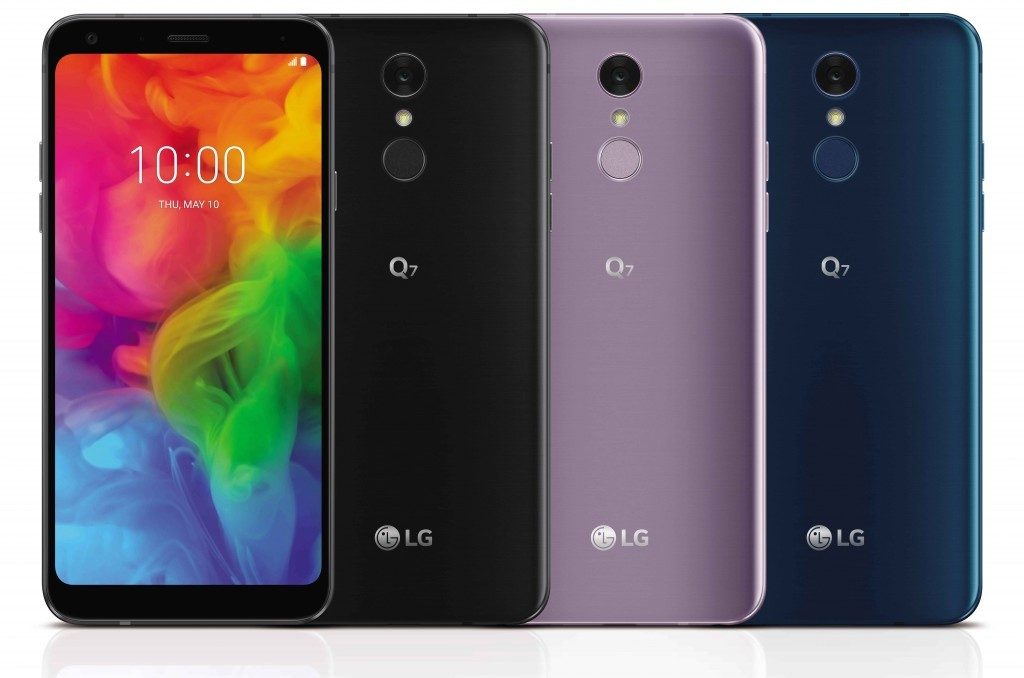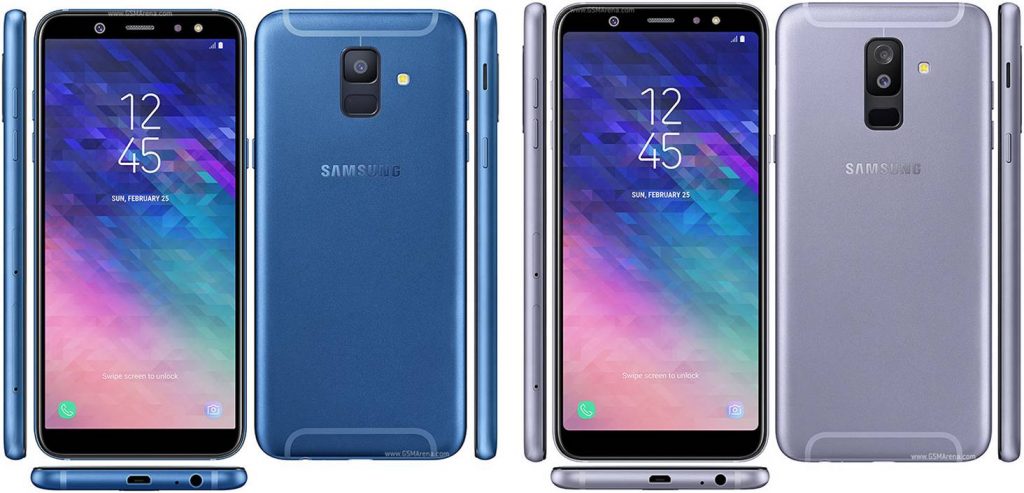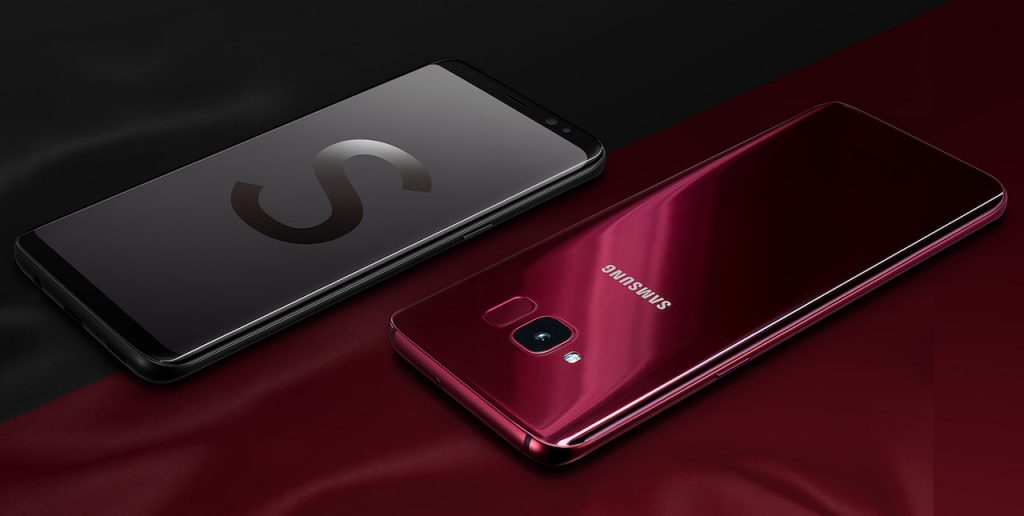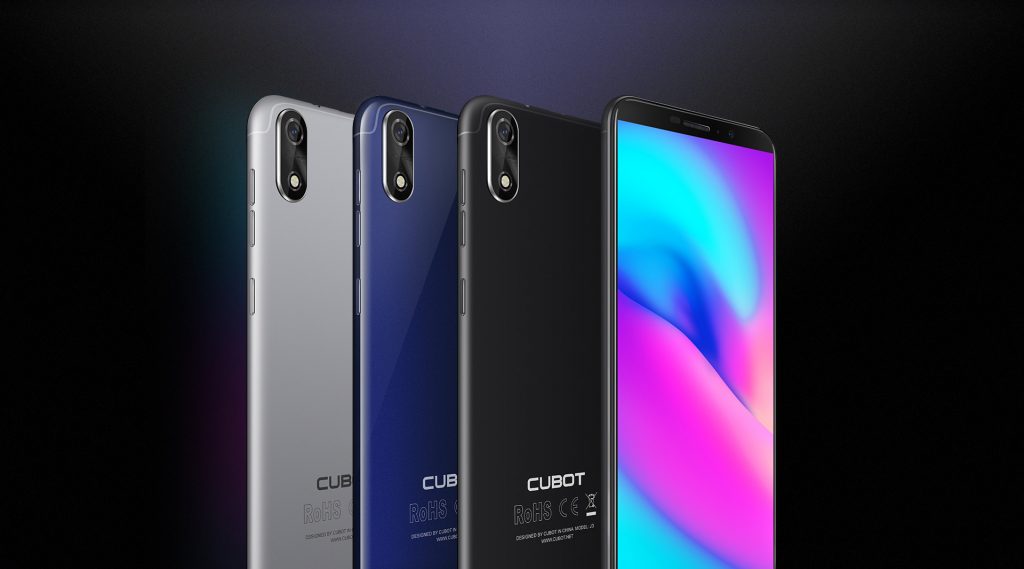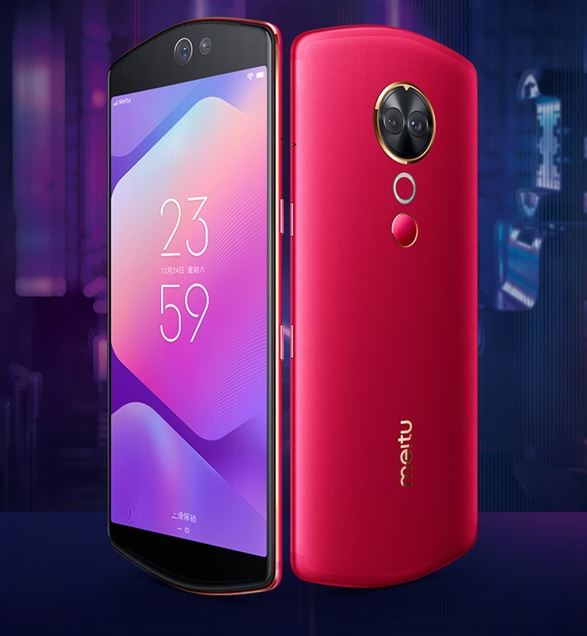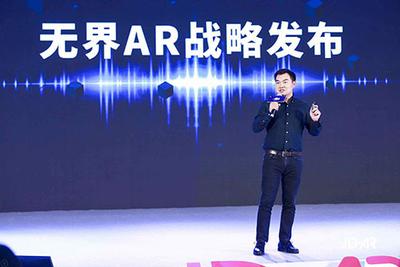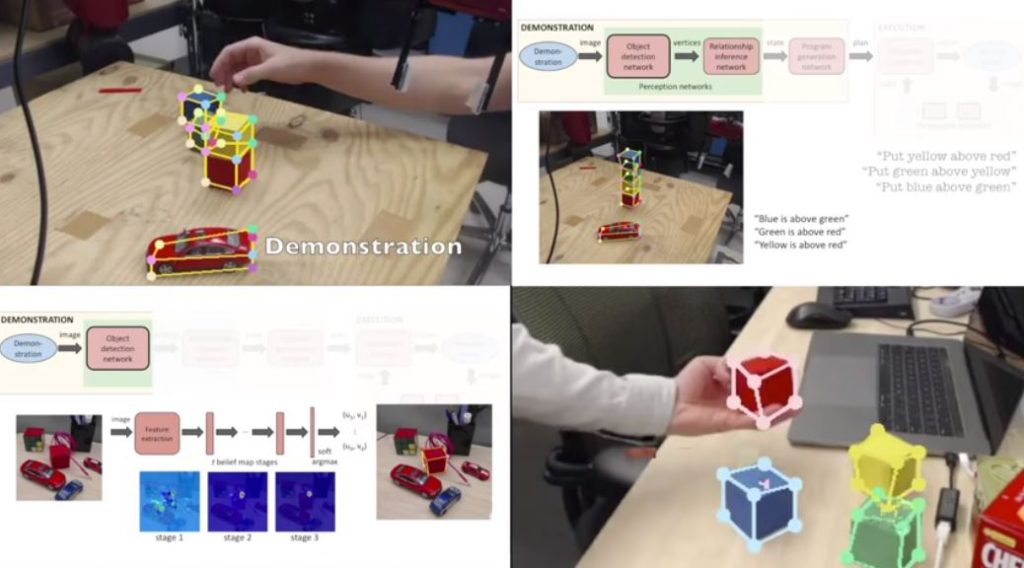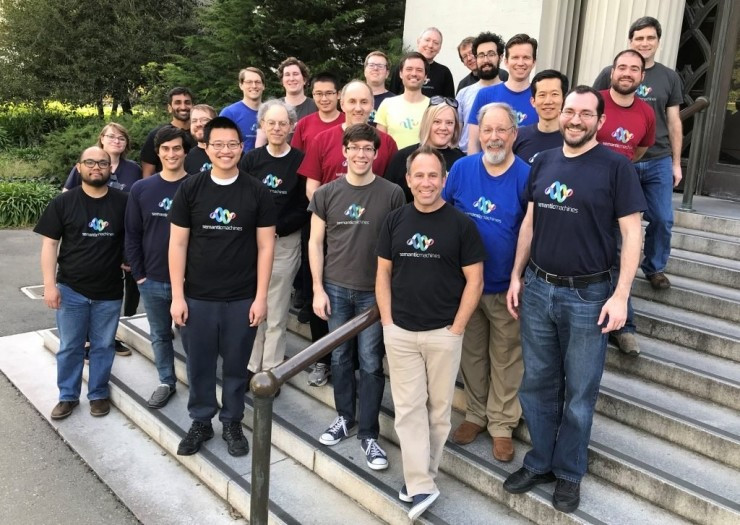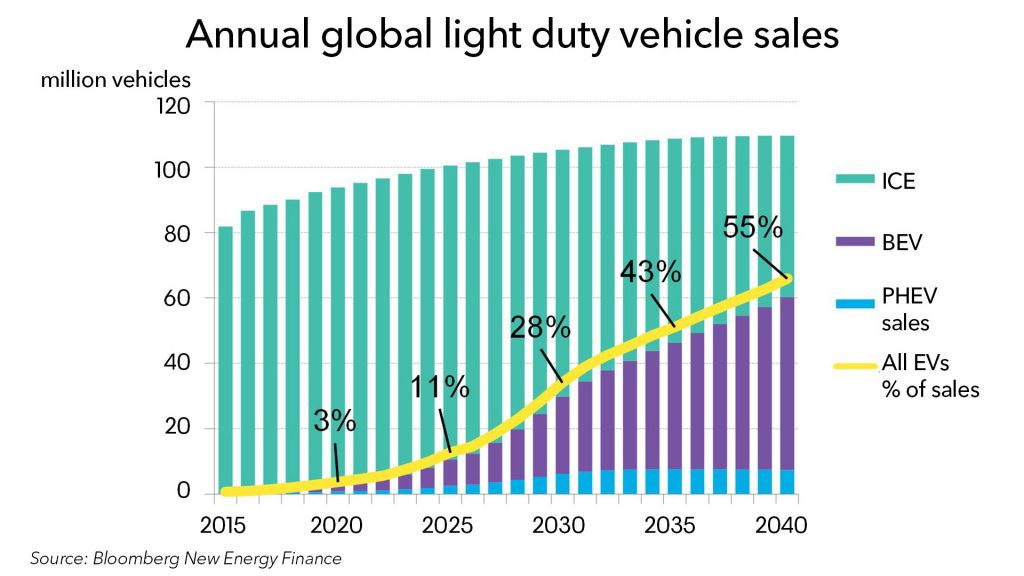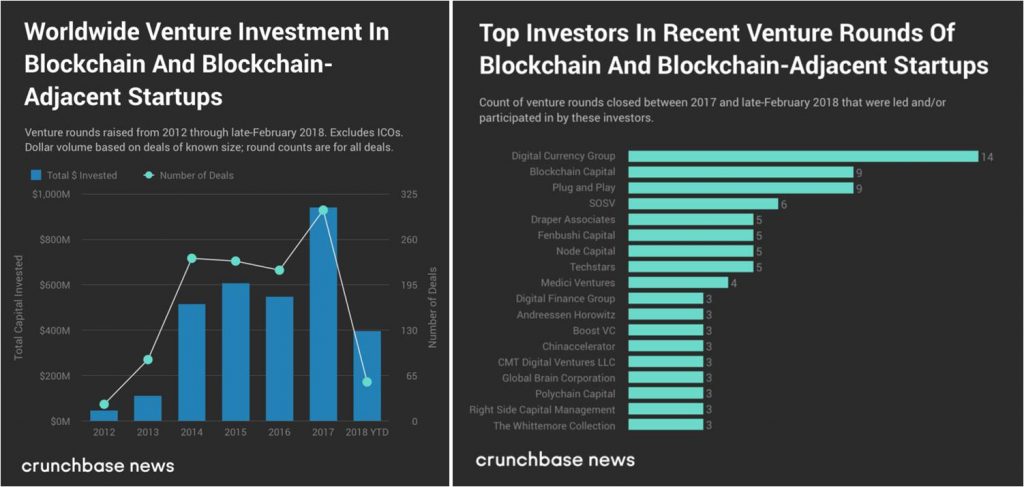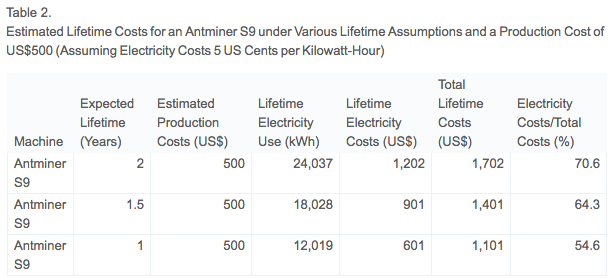05-22: Foxconn has confirmed that the company is building up a semiconductors team; Konka has announced entering semiconductor segment; JD.com forms AR alliance; etc.
Chipsets
Qualcomm unveils its newest wireless advancement, having announced an unprecedentedly versatile 5G New Radio solution earlier today. Called the FSM100xx, the device comes in the form of a small cell that the company says is the first such offering to be compatible with both millimeter-wave and sub-6GHz spectrum while also shipping with support for the latest wireless connectivity standard. (Android Headlines, Qualcomm, Telecom TV, Engadget CN, Sohu)
Terry Gou, chairman of Hon Hai Precision (trading as Foxconn), has confirmed that the company is building up a semiconductors team responsible for chip design and manufacturing to address massive demand for chips to be used in the company’s development of the industrial Internet of Things (IoT). The company is said to have procured up to USD40B worth of chips a year. (CN Beta, My Drivers, UDN, UDN, LTN, Taiwan News, Digitimes, press)
Konka has announced new strategic transformation, entering environmental protection and semiconductor chipset industries. It has announced “1234” strategic initiatives – 1 core positioning, 2 development lines, 3 development strategies and 4 business groups. (EET China, Sohu, NBD)
Infineon Technologies has announced a plan to build a new factory for power semiconductors – a fully automated chip factory for manufacturing 300mm thin wafers. The plant will be constructed at the Villach location in Austria alongside the company’s existing production facility. Investments for the project will total around EUR1.6B (USD1.88B) over 6 years. (Digitimes, press, Laoyaoba)
SMIC’s first EUV lithography machine is purchased from Holland semiconductor equipment manufacturer ASML, valued at USD120M. Although SMIC 14nm has made rapid progress, there is still a long way to go further to 7nm. As EUV lithography is different from the previous 193nm, it is an industrial chain from the principle to the matching, including the EUV photoresist, the mask, the pellicle, and the testing equipment. (My Drivers, Asia Nikkei, Laoyaoba, ESM China)
Samsung has reportedly set up an R&D division for its foundry business. The R&D division is reportedly under the device solution arm of Samsung and is focused on augmenting company’s capabilities in the foundry business. The new research unit joins memory, system LSI, semiconductor, production technology, display centers, and other research centers under the device solution wing. (Laoyaoba, Sam Mobile, Korea Herald)
Touch Display
AU Optronics (AUO) has announced that it will unveil leading-edge mobile device displays and LTPS technologies. To meet the growing demand for new types of interconnected smart devices, AUO will showcase LTPS technology by presenting ultra high resolution (UHD), narrow border, slim and power-saving displays for all types of mobile devices. (My Drivers, Digitimes, press)
Visionox Gen-6 fully flexible AMOLED production line, China’s first Gen-6 fully flexible AMOLED production line, is put into operation in Gu’an New Industry City in Hebei Province. Featuring a designed productivity of 30,000 substrates per month, the production line can meet the display demands of approximately 100M intelligent terminal devices. (Xinhuanet, Laoyaoba, PR Newswire)
Memory
Bitmain has reportedly placed DRAM orders mainly for low-capacity DDR3 chips with Taiwan-based memory design specialists Elite Semiconductor Memory Technology (ESMT) and Etron Technology. The new orders from Bitmain total over 10M 1Gb DDR3 equivalent chips, the report quoted industry sources as saying. In addition, AP Memory is likely to become the third supplier after ESMT and Etron in 3Q18. ESMT, Etron and AP Memory all partner with Powerchip Technology. (Laoyaoba, CECB2B, UDN, Digitimes, press, 8BTC, China Times)
Samsung Electronics and SK hynix plan to invest up to KRW45T to enhance their semiconductor manufacturing facilities mostly in Korea. Samsung is increasing its investment in chip fabrication facilities to KRW30T from an earlier KRW27.3T. That will see SK hynix increase its capital expenditure to KRW15T. (Laoyaoba, Korea Times)
Chinese integrated device maker Yangtze Memory Technologies (YMTC) has imported a CNY460M (USD72M) chipmaking machine from Holland as Chinese companies look to ramp up semiconductor development at home. YMTC bought the photolithography machine from Netherlands-based ASML. The machine can make processors at 193nm and produce 3D NAND (not and) memory wafers. (CN Beta, Yicai Global)
Innotron Memory and Fujian Jin Hua Integrated Circuit (JHICC), are gearing up for volume production of computer memory in Jun 2018. The equipment move-in will be completed by early Jul 2018 and the first phase of the fab will be able to start volume production of DRAM in the third quarter. JHICC reportedly partnered with UMC to develop its 22 nm DRAM manufacturing technologies, but at this point it is unclear which types of memory the company is gearing up to make. (AnandTech, Sohu, Zhifu, Semiconductor Engineering, article, CN Beta)
Connectivity
Facebook has now enlisted Qualcomm to provide the tech for its gigabit Wi-Fi project that is meant to make sending data through routers more efficient and increase internet speeds. The Terragraph Project has been in the works since Facebook first announced in 2016, describing the project as a “multi-node wireless system focused on bringing high-speed internet connectivity to dense urban areas.” (TechCrunch, The Verge, Engadget, Sina, Caijing)
Samsung has announced that it hosts the 3rd Generation Partnership Project (3GPP) working groups’ final meeting to complete the 5G mobile communication standards in Busan from 21~25 May 2018. This meeting will finalize the relevant standard technologies for 5G commercialization. (VentureBeat, Samsung, Laoyaoba)
Phone
HMD Global has just raised USD100M to help push the Nokia brand in 2018. With this new funding, the HMD Global “unicorn” status is solidified, since it now is worth over USD1B. The company committed to “aggressively expanding” the Nokia brand, and reaffirmed its commitment to the Android One program. (Android Authority, HMD Global, Android Central, iFeng, Sohu)
According to YouGov’s BrandIndex monitor, which interviews thousands of consumers every day to track the popularity of a brand, Microsoft’s popularity has reached a 2-year high, especially true for consumers of ages 18~35. This age group has scored the tech giant a 44. (YouGov, Phone Arena)
President Donald Trump’s administration may be considering easing penalties on ZTE amid broader trade negotiations, but White House economic adviser Larry Kudlow has insisted the company will not get off “scot-free”. (Laoyaoba, CNBC, Politico)
LG Q7, Q7+ and Q7a are announced, featuring 5.5” 2160×1080 FHD+, 1.5GHz octa-core / 1.8GHz octa-core, USB 2.0 Type-C, Hi-Fi audio, QLens that uses AI for image recognition and searching, 3000mAh, IP68 rated: Q7 – rear 13MP + front 5MP, 3GB+32GB. Q7+ – rear 13MP + front 8MP/5MP, 3GB+32GB. Q7a – rear 16MP + front 8MP/5MP, 4GB+64GB. (Android Headlines, Android Central, GSM Arena, LG, Liliputing)
Samsung Galaxy A6 and A6+ are announced in India:A6 – 5.6” 720×1440 HD+ Super AMOLED, Samsung Exynos 7870, rear 16MP + front 16MP, 3GB+32GB / 4GB+64GB, 3000mAh, INR21,990 / INR22,990. A6+ –6” 1080×2220 FHD+ Super AMOLED, Qualcomm Snapdragon 450, rear dual 16MP – 5MP + front 24MP, 3GB+32GB / 4GB+64GB, 3500mAh, INR25,990. (Android Central, GSM Arena, Samsung, Samsung, Samsung)
Samsung Galaxy J4, J6 and J8 are announced in India: J4 – 5.5” HD Super AMOLED, Samsung Exynos 7570, rear 8MP + front 5MP, 2GB+16GB, 3000mAh. J6 – 5.6” 720×1440 HD+ Super AMOLED, Samsung Exynos 7870, rear 13MP + front 8MP, 3GB+32GB / 4GB+64GB, 3000mAh, INR13,990 / INR16,490. J8 – 6” 720×1440 HD+ Super AMOLED, Qualcomm Snapdragon 450, rear dual 16MP – 5MP + front 16MP, 4GB+64GB, 3500mAh, INR18,990. (Android Central, GSM Arena, Samsung, Samsung, Samsung)
Samsung Galaxy S Light Luxury is launched in China – 5.8” 2220×1080 FHD+ Super AMOLED, Qualcomm Snapdragon 660, rear 16MP + front 8MP, 4GB+64GB, 3000mAh, IP68 rated, CNY3999. (The Verge, Sam Mobile, Tencent)
Cubot J3 is announced – 5” 18:9 TN, MediaTek MT6580, rear 8MP + front 5MP, 1GB+16GB, Android Go, 2000mAh, USD60. (Gizmo China, GizChina, Cubot)
Meitu T9 is announced – 6.01” 2160×1080 FHD+ OLED, Qualcomm Snapdragon 660, rear dual 12MP – 5MP + front dual 12MP – 5MP, 4GB+64GB / 6GB+128GB, Android 8.1, 3100mAh. (My Drivers, Sina, CN Beta, Sohu)
Augmented / Virtual Reality
China e-commerce giant JD.com has announced collaboration with Intel, Walmart, Vipshop, Lenovo and other AR industry and retailers to form the country’s first AR innovation alliance. The aim is to build an online and offline shopping user experience. JD.com also announced AR makeup mirror, AR fitting mirror and AR smart glasses. (CN Beta, 36Kr, Sina, West Dollar)
Robotics
Nvidia has developed a method to train robots how to carry out actions by first watching human activity. In initial applications, robots learned to pick up and move colored boxes and a toy car in a lab environment using a Baxter robot. (TechCrunch, VentureBeat)
Artificial Intelligence
Microsoft is acquiring conversational AI startup Semantic Machines in an effort to make bots and intelligent assistants like Cortana sound and respond more like humans. Founded in 2014, Semantic Machines uses machine learning to make bots respond in a more natural way to queries. (Android Authority, The Verge, Sohu, Sina)
Alibaba is teaming up with SenseTime to launch a not-for-profit artificial intelligence (AI) lab in Hong Kong in a bid to make the city a global hub for AI. Alibaba, which is SenseTime’s largest single investor thanks to a recent USD600M round at a valuation of USD4.5B, is providing financing for the “HKAI Lab” through its Hong Kong entrepreneurship fund. (Laoyaoba, SCMP, TechCrunch)
Emergence Capital has announced it has raised a USD435M fund to invest in companies that use machine learning to help people increase productivity at work. The fund will focus especially on companies that provide coaching powered by data and conversational AI to help people perform their jobs better. (VentureBeat, Globe Newswire)
Automotive
Lyft is looking into launching its own fleet of electric scooters in San Francisco. Lyft would join the likes of Spin, Bird and Lime — the 3 startups that deployed their scooters in San Francisco, without permission, back in Mar 2018. Lyft has reportedly been in talks with San Francisco city officials to discuss applying for a permit, and has drafted some prototypes of scooter designs. (TechCrunch, The Information, Sina)
Mobike will launch services in India soon, seeking to expand in another mega-market amid increased competition and a crackdown by local authorities on the number of bikes on the road in major cities at home. It will be initially launching in Pune, but plans to establish its presence in 10 cities across the country over the next 12-16 months. (TechCrunch, SCMP, Economic Times, iFeng)
Tesla CEO Elon Musk has finally pulled back the curtain on where The Boring Company is headed. Musk has shown off his concept for the Loop, a “personalized mass transit” system that would carry 16 people per pod and travel at 150 miles per hour. Musk also said he envisions dozens to hundreds of small stations, each about the size of a single or double parking spot, to alleviate traffic at any one spot. (CNET, CN Beta)
ofo has announced strategic collaboration with Beijing Municipal Transport Card (or “Beijing One Card”). As long as the user binds the Beijing Card to the ofo App, the Beijing Card Card can be automatically unlocked when it is close to the shared bicycle smart lock. (Laoyaoba, JRJ, TechWeb, West Dollar)
The electrification of road transport will move into top gear in the second half of the 2020s, thanks to tumbling battery costs and larger-scale manufacturing, with sales of electric cars racing to 28%, and those of electric buses to 84%, of their respective global markets by 2030. The Bloomberg New Energy Finance (BNEF) forecast shows sales of electric vehicles (EVs), increasing from 1.1M worldwide in 2017 to 11M in 2025, and then surging to 30M in 2030 as they establish cost advantage over internal combustion engine (ICE) cars. (CN Beta, CNET, BNEF)
Fintech
Circle has recently announced a USD110M Series E round led by bitcoin mining hardware manufacturer Bitmain. Other participating investors include Tusk Ventures, Pantera Capital, IDG Capital Partners, General Catalyst, Accel Partners, Digital Currency Group, Blockchain Capital and Breyer Capital. Circle is a global internet finance company, built on blockchain technology and powered by crypto assets. (TechCrunch, iFeng)
According to Crunchbase, 2017’s funding totals were boosted by a number of sizable venture rounds, including: Coinbase’s USD108.1M Series D, USD43.45M invested in Chinese ASIC chip manufacturer Canaan Creative, and a USD42.5M Series B raised by multi-signature bitcoin wallet provider BitGo. 2018 is off to a strong start with a USD75M Series B closed by secure hardware wallet-maker Ledger, USD18M invested in the seed round of Russian blockchain-for-cargo-tracking platform QUASA, and USD10M invested in SF-based Harbor Platform, among other large rounds. (Crunchbase, press)
According to PwC economist Alex de Vries, the bitcoin network can be estimated to consume at least 2.55 gigawatts of electricity currently, and potentially 7.67 gigawatts in the future, making it comparable with countries such as Ireland (3.1 gigawatts) and Austria (8.2 gigawatts). (TechNews, Energy Trend, Coin Telegraph, The Register, Grist, Eureka Alert, Science Direct)
